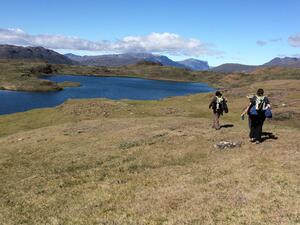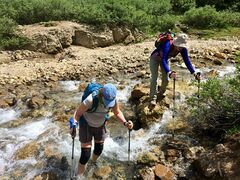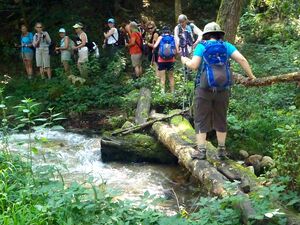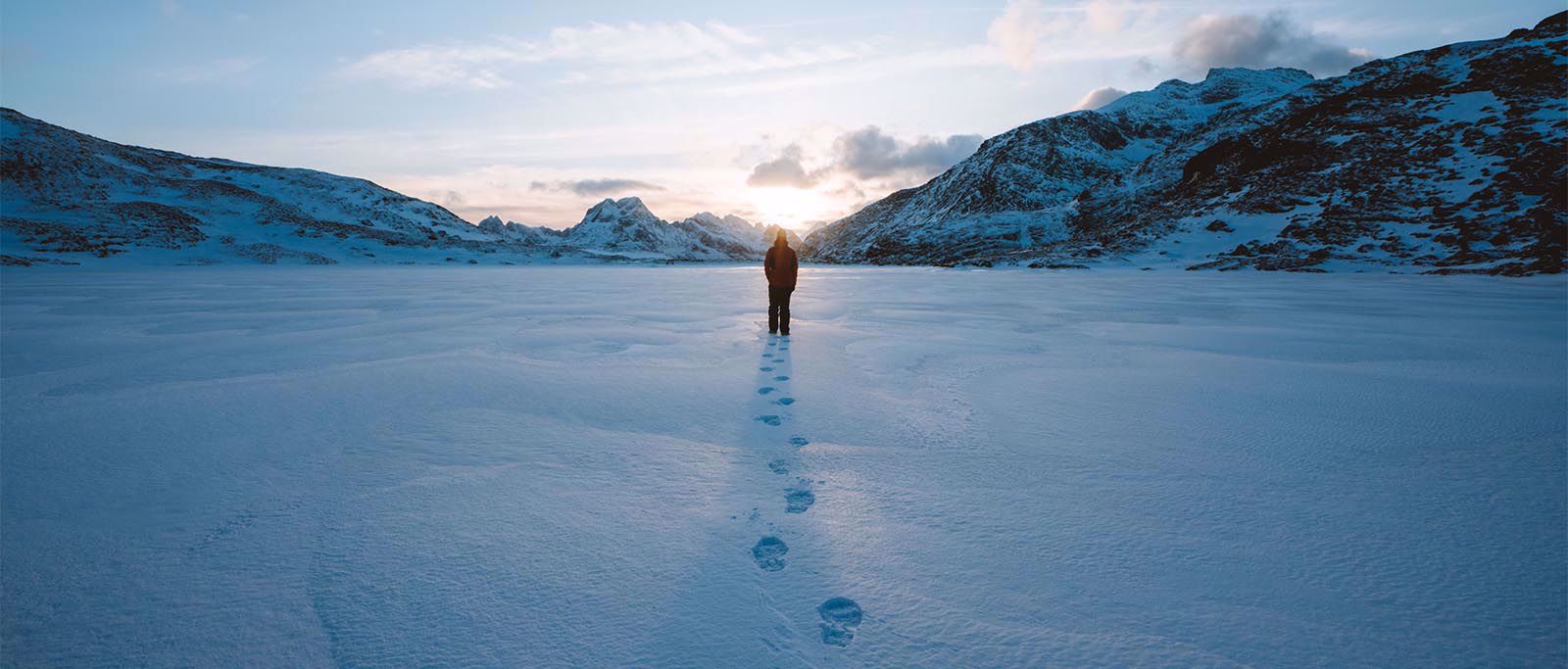This third installment of the Hiker's Glossary is a guide to common hiking terms. The first portion of the Hiker's Glossary was all about Types of Trails and the second portion focused on Terrain. Look for parts 3, 4, and 5 coming soon!
Whether you've been hiking for half a century or are looking to hit the trail for the first time, one of the greatest joys of hiking is that there are so many different things to discover on your own two feet. We're here to help.
Front country vs. backcountry
These terms have both unofficial and official definitions. As a rule of thumb, “front country” is considered to be within an hour or so of roads, towns, and medical care whereas “backcountry” is more than an hour from these aspects of civilization. National parks and other public lands designate certain areas as “backcountry zones” for management purposes. These official backcountry hiking/camping zones are indicated on National Park maps, but maps and trail signs won’t tell you when you’re crossing the arbitrary boundary between “front country” and “backcountry”. Keep in mind that hiking trails close to roads and towns might not have cell service, which adds a level of remoteness to the “front country” even if you’re only venturing a few miles from the trailhead.
Wilderness
This term has both a general and a legal definition. People often use the term “wilderness” as a synonym for “backcountry,” meaning a large expanse of undeveloped land, far from what we call civilization. In the United States, public lands officially designated as wilderness areas are managed according to The Wilderness Act of 1964 which created the National Wilderness Preservation System. Wilderness areas are managed by the National Park Service, U.S. Forest Service, U.S. Fish and Wildlife Service, or the Bureau of Land Management.
Maintained vs. unmaintained trail
Also referred to as developed trail vs. primitive trail
Many hiking trails are maintained by staff and/or volunteers from a land agency or a hiking club who clear downed trees and rockslides, repair washed-out bridges, replace missing signs, etc. Other trails are minimally maintained or unmaintained (also called “primitive” trails).
Trail work is labor-intensive and maintenance might happen just once or twice a year, so it’s always possible to encounter an unexpected obstacle even on a maintained or “developed” trail. Your best bet is to contact the agency or organization responsible for the trail to check on current conditions before starting your hike. Online hiker forums are another source of information. After your hike, report back on the conditions you found. And consider volunteering for a trail work day and/or joining the club that maintains the trail.
Off-trail/cross-country hiking

Off-trail hiking is often prohibited or discouraged because it contributes to erosion and negatively impacts vegetation. Unofficial hiker-created trails can also lead to navigational confusion. However, there are hiking areas that allow, or even require, off-trail hiking. For example, in Denali National Park there are no established trails in the backcountry. Rocky terrain with sparse vegetation (such as desert slickrock or high alpine zones) may be open to cross-country hiking. Check with the land management agency to find out regulations regarding off-trail hiking, and always follow Leave No Trace practices both on and off trail.
Note: you’ll need excellent map and compass skills if you plan to hike cross-country.
Bushwhacking
If you hike off-trail through vegetated areas, you’re “bushwhacking"- pushing aside branches, bushes, and undergrowth. As noted above, in forested areas hiking etiquette generally means sticking to the trail. However, if a trail is unmaintained and overgrown, you may find yourself bushwhacking anyway (a good reason to find out about trail conditions before heading out!). This is typically a slow-going process.
Creek crossing

When a hike description refers to a creek or stream crossing this usually means there isn’t a bridge. “Wet crossing” or “ford” definitely indicates there’s no bridge and you’ll need to walk through the water. A “rock hop” means you can cross the waterway by stepping from rock to rock.

Keep in mind that water levels in streams vary throughout the year according to snowmelt and rain. Wet rocks and logs are slippery—if you slip, your feet (and possibly more of you) will get wet anyway, plus you run the risk of twisting an ankle. Sometimes the safest option with the most secure footing (if there isn’t a bridge) is to walk through the water. Bring a second pair of lightweight footwear (sandals or water shoes) if you anticipate wet crossings so you can protect your feet from sharp rocks, have stable footing, and keep your primary hiking shoes/boots dry.



